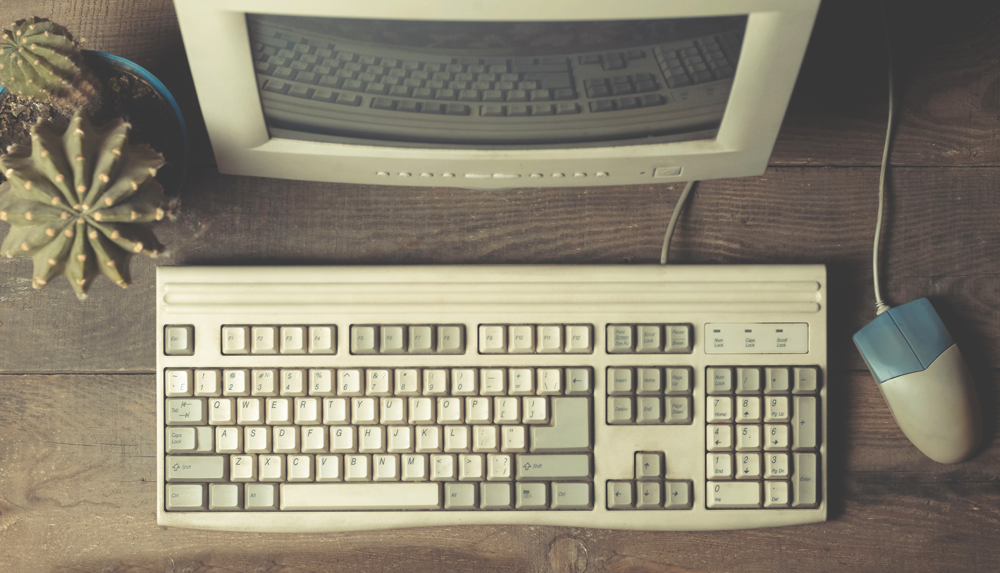Computers are made to last, so why is it so common for people to trade in their PCs or laptops after only a few years? There are multiple reasons why people upgrade their computers to a newer one, but most of the time, it’s because they want the speed and performance that comes with a new PC. And who can blame them? Slow speeds and poor performance can really take away from the overall online experience, and in a world where computers are used for basically everything, slow speeds can be a dealbreaker. But what if we told you that there was a way to make your older computer faster without breaking the bank. It’s worth a shot, right?
So before you give up on your older computer, let’s go over some of the reasons it may be running slower than before and what you can do to get it up to speed!
Computers: Then and Now
If you are older than twenty-five years, you have had a front-row seat to the technological advances, especially when it comes to computers and phones. In the late 90s, it was not considered uncommon not to have a computer in your household. If you did have a computer in your home, there was still a good chance that you did not have access to the internet (and if you did, you had to choose between talking on the phone or connecting to the web via dial-up connections). With that being said, desktop computers were still considered a luxury until the early-2000s, and the costs reflected that idea. The average cost of a basic computer in the year 2000 was between $1500 and $2000, which is a steep price tag for a “basic” computer, even by today’s standards (if you adjust that price for inflation, it is around $2000-$3200).
Prices began to drop as newer models became available, and by 2005, the average cost of a computer was under $1000, making it a more affordable option for households in the US. Two years later, Apple would announce the first iPhone, forever changing the world of technology.
Today, all phones are smartphones, and residential landlines are almost obsolete. Laptops are more affordable than top-of-the-line smartphones, and computers are considered a basic essential for school and work.
The point we are trying to make is that computers have come a long way but just because a computer is old, does not mean that it is useless. If you have a computer that is less than 10 years old, you can still do plenty of things to increase speed and performance.
Once you learn how to make an old computer faster, you can still use it for daily computer activities such as work, email, browsing.
How to Make An Old Computer Faster
So before we get into tips on how to make an old computer faster, let’s look at some factors that may be contributing to slower speeds:
- Outdated OS (this most likely applies to your older computer)
- Outdated drivers
- Low disk drive space
- Security issues (malware or viruses)
- Low RAM space (Random access memory)
- Fragmented hard drive
- Unnecessary files or applications
Once you understand what might be causing your computer to run slower, it will be easier to address each issue. Every older computer is going to be a little different but here are some things that you can do to make your old computer feel new-ish again:
Physically Clean The Computer
Although the speed of your computer is determined by hardware and specs, your PC runs more efficiently when all of its components are running smoothly, including any cooling fans. A dust build-up may actually slow down speeds because the PC cannot properly cool itself, which may put additional stress on the hardware. One of the best ways to clean the dust from your old PC is through a can of compressed air.
- Delete Programs, Files, and Uninstall Old Software
Once you start up your computer, go through it and remove software programs that you no longer use. Go through old downloads, documents, and media files and delete them or save them to an external hard drive. Once you start up your computer, go through it and remove software programs that you no longer use. If you do not want to do this manually, consider using an online PC cleaner. - Add More RAM
Adding more RAM to your PC can significantly improve overall speed and performance. Although this is not the easiest way to boost speeds, it could be the most effective. - Check For Malware or Viruses
When it comes to older PCs, one of the biggest concerns is malware, spyware, or viruses that have corrupted your system or files. The best, easiest, and most effective way to handle viruses and remove them is through anti-virus software that identifies, cleans, and removes these files.

